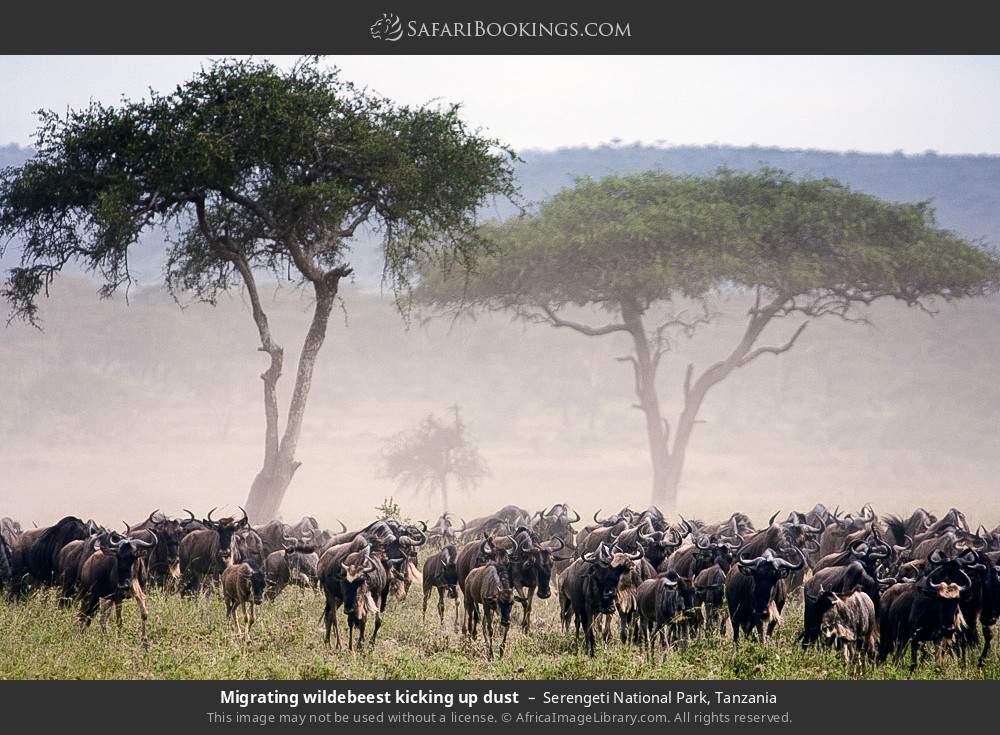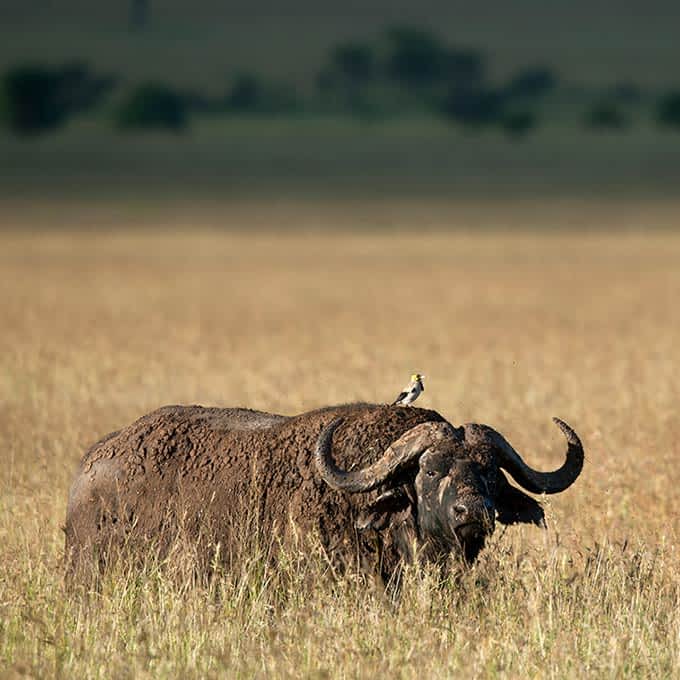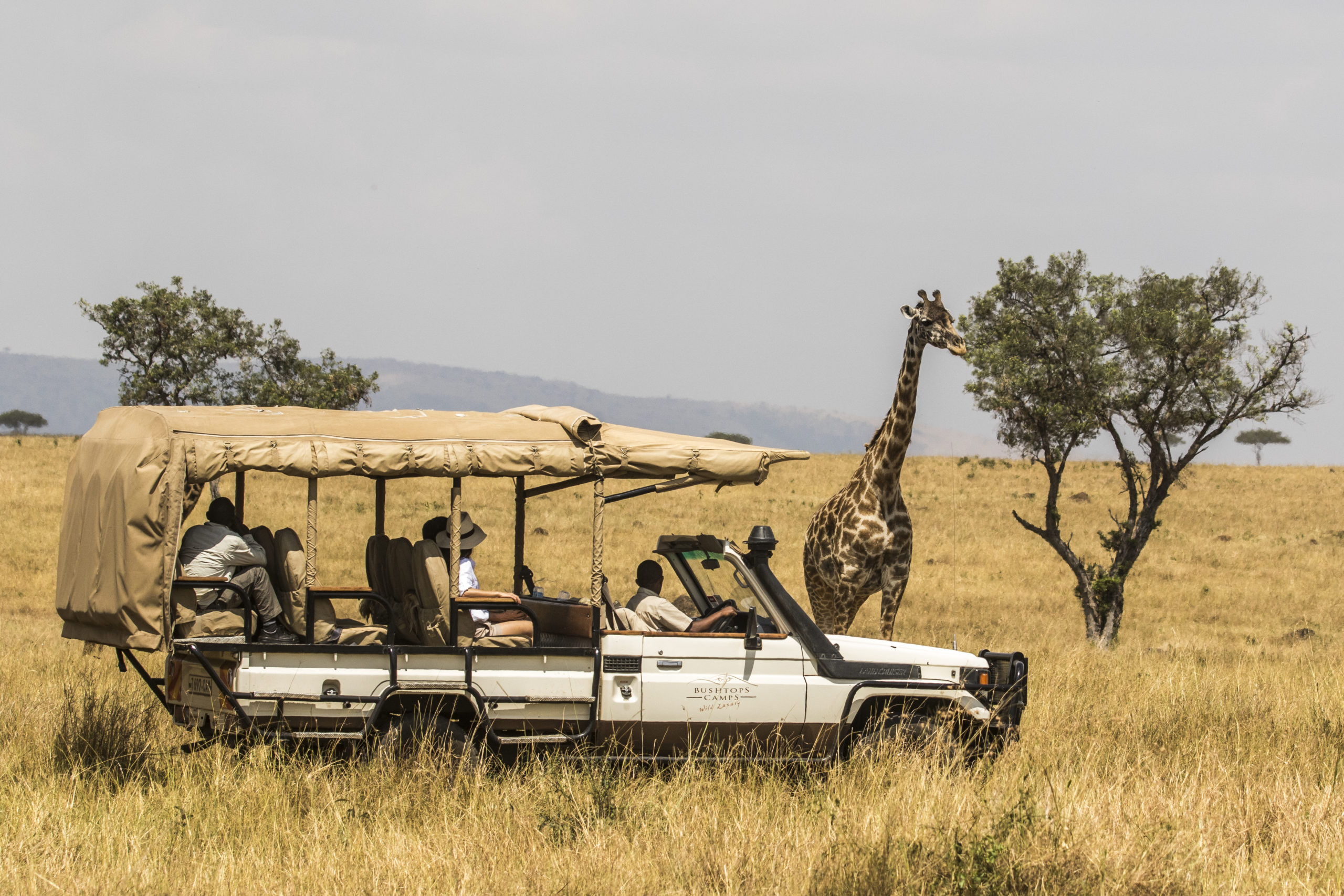Serengeti National Park: A Safari Adventure Like No Other

Serengeti National Park is an iconic safari destination in Tanzania, East Africa. Its vast plains, abundant wildlife, and stunning natural beauty have become a must-visit for wildlife enthusiasts and nature lovers worldwide. In this blog post, we will explore the history and significance of Serengeti National Park and discuss why it is considered one of the top safari destinations.
History and significance of Serengeti National Park
Serengeti National Park has a rich history that dates back to the 1920s when it was first established as a game reserve by the German colonialists. It was later expanded and established as a national park in 1951. The park covers an area of approximately 14,750 square kilometres, making it one of the largest national parks in Africa.
The significance of Serengeti National Park lies in its role as one of the last remaining intact ecosystems on the planet. It is home to the famous Great Migration, where millions of wildebeest, zebras, and other herbivores migrate across the park in search of water and fresh grazing lands. This extraordinary natural phenomenon has captured the imagination of people worldwide and has made Serengeti a UNESCO World Heritage Site.
Why Serengeti National Park is a top safari destination
Serengeti National Park offers a unique and unparalleled safari experience. Here are some reasons why it is considered a top destination:
-
Abundance of Wildlife: Serengeti National Park is home to a diverse range of wildlife, including the Big Five – elephants, lions, leopards, buffalos, and rhinos. Visitors can witness these majestic creatures up close in their natural habitat.
-
Great Migration: The Great Migration is a spectacle like no other. Watching thousands of wildebeest and zebras crossing rivers and plains in search of food and water is an awe-inspiring experience that attracts visitors from all corners of the globe.
-
Balloon Safaris: Serengeti is one of the few places in the world where you can go on a hot air balloon safari. Soaring above the plains at sunrise and witnessing the wildlife from a bird's eye view is a truly unforgettable experience.
-
Stunning Landscapes: The Serengeti is renowned for its breathtaking landscapes, from the vast sweeping plains to the rocky outcrops known as kopjes. The scenery alone is worth a visit.
Serengeti National Park is a treasure trove of wildlife and natural wonders. Its history, significance, and unique offerings make it a top safari destination that should be on everyone's travel bucket list. Whether you're a wildlife enthusiast, a photography lover, or simply seeking a memorable adventure, Serengeti National Park will not disappoint.

Getting to Serengeti National Park
You must plan your trip well to embark on your adventure to Serengeti National Park. Here are some essential details to consider:
The best time to visit Serengeti National Park
The best time to visit Serengeti National Park depends on your interests and what you hope to see. Here are two significant events that may influence your decision:
-
The Great Migration: If witnessing the Great Migration is your priority, plan your visit between June and July when the herds gather in the Western Corridor or between November and February when they are in the Southern Serengeti and Ngorongoro Conservation Area.
-
Game Viewing: For optimal game viewing, June to September offers a drier season where animals are easier to spot as they gather around water sources. October to February is another great time, as it is the calving season, and predators are prowling nearby.
Transportation options to Serengeti National Park
Getting to Serengeti National Park requires some planning, but the journey is an exciting part of the adventure. Here are the main transportation options available:
-
Fly-In Safari: For those looking to save time and enjoy aerial views, flying to Serengeti National Park is an option. There are multiple airports nearby, including Seronera, Grumeti, and Kogatende. Once there, you'll hop on a game drive vehicle to explore the park.
-
Road Trip: If you prefer a more immersive experience, a road trip to Serengeti National Park allows you to soak in the surroundings. You can rent a vehicle or join a guided tour, enjoying stops to marvel at the incredible landscapes and spot wildlife.
No matter how you choose to get there, Serengeti National Park promises an unforgettable journey that will leave you in awe of its wonders. From the vast plains to the rich wildlife, every moment spent in this magical place will be etched in your memory forever. So, start planning your trip and prepare for an adventure you'll cherish forever.

Exploring the Wildlife
The Big Five: Lions, Elephants, Rhinos, Leopards, and Buffalos
Serengeti National Park's diverse wildlife, including the famous Big Five, are its main attractions. Here's a closer look at these majestic creatures:
-
Lions: Known as the "kings of the jungle", lions are abundant in the Serengeti. You can spot them roaming the grasslands, basking in the sun, or even witness a thrilling hunt.
-
Elephants: Serengeti is home to a large population of elephants, and you can often see them moving in herds, grazing on the vegetation or taking a dip in the watering holes.
-
Rhinos: While rhinos are more elusive and harder to spot, Serengeti National Park is one of the few places in Tanzania where you can still find them. The park is known for its black rhino population, and with a bit of luck, you may catch a glimpse of these endangered creatures.
-
Leopards: Leopards are famous for their stealth and grace, and Serengeti offers a great chance to see them in their natural habitat. These solitary and elusive cats can often be found resting on tree branches or hunting their prey.
-
Buffalos: The African buffalo, also known as the Cape buffalo, is a massive and formidable animal that forms large herds in the Serengeti. You can witness their impressive strength and witness their interactions within the herd.
Other wildlife and bird species in Serengeti National Park
Apart from the Big Five, Serengeti National Park is also home to a plethora of other wildlife and bird species. Here are some notable ones you may encounter:
-
Giraffes: The Serengeti is a great place to spot giraffes gracefully moving across the plains, feeding on the acacia trees, and engaging in playful necking bouts.
-
Cheetahs: Serengeti is known for its high cheetah population. These magnificent creatures are renowned for their speed and can often be seen sprinting across the open savannah in pursuit of prey.
-
Hippos: Serengeti's rivers and watering holes are inhabited by hippos, the giant aquatic mammals. You can witness their massive presence and observe their behaviour in the water and on land.
-
Birds: Serengeti National Park is a haven for bird enthusiasts, with over 500 species of birds. From vibrant and colourful bee-eaters to majestic raptors like eagles and vultures, the park offers ample opportunities for birdwatching.
Exploring the wildlife in Serengeti National Park is like stepping into a nature documentary to come to life. Whether you're searching for the Big Five or marvelling at the diversity of bird species, Serengeti promises unforgettable wildlife encounters at every turn. So, keep your camera ready and your senses alert as you embark on this incredible wildlife safari.

Serengeti National Park Safari Activities
Game drives and guided tours in Serengeti National Park
Embarking on a game drive or guided tour is a must-do activity when visiting Serengeti National Park. These activities offer an incredible opportunity to explore the vast expanse of the park and get up close and personal with its remarkable wildlife. You'll be accompanied by experienced guides knowledgeable about the park's ecosystem and inhabitants, ensuring you have a memorable and informative experience.
During a game drive, you'll traverse the park's diverse landscapes, from expansive grasslands to wooded areas, in search of wildlife. The knowledgeable guides will help you spot animals and provide fascinating insights into their behaviour and habitat. Be prepared to witness breathtaking scenes, like herds of wildebeest migrating across the plains or a pride of lions basking in the golden sunlight.
If you prefer a more intimate experience, consider a guided tour. These tours allow you to explore specific areas of the park in-depth, focusing on particular habitats or wildlife species. Whether you're interested in birdwatching, tracking elusive leopards, or learning about the intricate relationships within an elephant herd, there's a guided tour tailored to your interests.
Hot air balloon safaris and walking safaris in Serengeti
For an unforgettable and unique experience, consider embarking on a hot air balloon safari or a walking safari in Serengeti National Park.
A hot air balloon safari offers a truly breathtaking perspective of the park from above. As you ascend into the sky, you'll witness the vastness of the Serengeti spread out beneath you, with its diverse landscapes and winding rivers. It's a peaceful and serene experience that allows you to admire the beauty of the park and spot wildlife from a different vantage point. Keep your camera handy, as you may capture stunning aerial shots of animals in their natural habitat.
If you crave a more active adventure, a walking safari is the perfect option. Accompanied by armed rangers and expert guides, you'll set off on foot to explore the park's wilderness. This immersive experience allows you to connect with nature on a deeper level and learn about the smaller details of the ecosystem, such as plant life and animal tracks. It's a chance to engage all your senses as you listen to the sounds of the bush, feel the earth beneath your feet, and encounter wildlife up close while maintaining a safe distance.
Whether you choose a game drive, guided tour, hot air balloon safari, or walking safari, Serengeti National Park offers a range of safari activities that cater to different interests and preferences. Whichever adventure you embark on, be prepared to be awestruck by the beauty of the park and the incredible wildlife encounters that await you.

Accommodation in Serengeti National Park
Luxury lodges and tented camps in Serengeti National Park
If you're looking for a luxurious and comfortable stay in the heart of Serengeti National Park, you'll find a range of luxury lodges and tented camps. These accommodations offer top-notch amenities, breathtaking views, and an immersive safari experience. Imagine waking up to the sound of birds chirping and stepping out onto your private deck to witness a beautiful African sunrise. The luxury lodges and tented camps in Serengeti National Park provide a perfect blend of wilderness and luxury, ensuring a memorable and indulgent stay.
Budget-friendly accommodations and camping options
For those travelling on a tighter budget, Serengeti National Park also offers budget-friendly accommodation options and camping facilities. You can choose to stay in one of the park's public campsites, where you can set up your own tent and enjoy basic amenities such as shared bathrooms and cooking facilities. This is a great option for adventurous travellers who want to immerse themselves in the natural surroundings and have a more affordable safari experience.
Alternatively, there are also budget-friendly lodges and tented camps available in the park. These accommodations offer comfortable rooms or tents at more affordable rates while still providing a genuine safari experience. You'll have the opportunity to connect with nature and witness incredible wildlife without breaking the bank.
No matter your budget or accommodation preference, Serengeti National Park has options to suit every traveller. Whether you choose a luxury lodge or a budget-friendly camping option, you'll be surrounded by the park's awe-inspiring landscapes and have easy access to thrilling safari activities. Each night, you can fall asleep to the sounds of the African wilderness and wake up ready for another day of exploration. Your accommodation in Serengeti National Park will be a haven of comfort and tranquillity, making your safari experience even more unforgettable.
Serengeti National Park: A Photographer's Paradise
Tips for capturing stunning wildlife photographs in Serengeti
When it comes to wildlife photography, Serengeti National Park is a dream destination for photographers. With its vast landscapes and incredible biodiversity, this park offers endless opportunities to capture stunning photographs of Africa's iconic wildlife. Here are some tips to help you make the most of your photography experience in Serengeti:
-
Invest in a good telephoto lens: Wildlife photography often requires getting close to the animals without disturbing them. A telephoto lens with a long focal length will allow you to capture detailed close-ups of the animals without approaching too closely.
-
Be patient and observant: The key to capturing great wildlife shots is to spend time observing and studying the behaviour of the animals. This will enable you to anticipate their movements and capture unique and engaging moments.
-
Use natural light to your advantage: The soft golden light during the early morning and late afternoon is ideal for wildlife photography. Take advantage of the "golden hour" and plan your shoots accordingly.
-
Focus on composition: Pay attention to the composition of your shots. Use the rule of thirds to create visually pleasing images. Consider the surroundings and include elements like trees, grass, or the vast expanse of the Serengeti to add depth and context to your photographs.
Best time of day for photography in Serengeti National Park
The best time for photography in Serengeti National Park is early morning and late afternoon. This is when the light is soft and golden, creating a magical atmosphere and enhancing the colours and textures in your photographs. The park's wildlife is also more active during these times, increasing your chances of capturing interesting behaviour and action shots.
During midday, the sunlight becomes harsh and causes strong shadows, making achieving balanced and well-exposed photographs challenging. However, this time can still be valuable for capturing landscapes or seeking out active animals during the day.
It's important to note that the weather and lighting conditions can vary depending on the time of year. The dry season (from June to October) is generally considered the best time for photography in Serengeti National Park, as the skies are clear, and the animals gather around watering holes, increasing the chances of dramatic wildlife encounters and photo opportunities.
Serengeti National Park offers a photographer's paradise with its stunning natural beauty and abundant wildlife. By following these tips and planning your shoots during the best times of day, you can capture breathtaking photographs that will truly showcase the awe-inspiring magic of the Serengeti.

Local Culture and Traditions
Maasai tribes and their traditional way of life
Immerse yourself in the rich cultural heritage of the Maasai tribes when visiting Serengeti National Park. The Maasai people are known for their distinctive dress, beadwork, and traditional way of life. Interacting with the Maasai tribes provides a unique opportunity to learn about their customs and traditions.
The Maasai tribes typically live in small traditional villages known as manyattas. These villages are made up of individual households or bomas, which are circular enclosures constructed using branches and cow dung. The Maasai people value their livestock, especially cattle; you can often see them grazing in the surrounding areas.
When interacting with the Maasai, being respectful and asking for permission before taking photographs is important. Many tribes offer cultural experiences, such as traditional dances, where you can witness their vibrant music, energetic jumping, and incredible vocal harmonies. You may even have the opportunity to participate in these dances and learn some Maasai moves yourself!
Opportunities for cultural interactions and experiences
In addition to the Maasai tribes, Serengeti National Park offers various opportunities to engage with other local cultures and learn about their traditions. Some lodges and camps organize cultural visits to neighbouring communities, enabling you to witness daily activities and gain insight into the local way of life.
You might visit a local market to browse handicrafts and interact with local artisans. This is a great chance to support the local economy and purchase unique souvenirs directly from the makers.
Another way to get involved in the local culture is by trying traditional cuisine. Serengeti National Park offers a range of dining options that showcase local dishes, allowing you to savour the flavours of Tanzania.
By immersing yourself in the local culture and traditions of Serengeti National Park, you can enhance your overall experience and gain a deeper appreciation for the diverse communities that call this region home.
Conservation and Protection Efforts
Conservation Initiatives in Serengeti National Park
Serengeti National Park is a haven for wildlife and a centre for conservation efforts. The park plays a crucial role in protecting natural habitats and preserving the region's unique biodiversity.
One of the key conservation initiatives in Serengeti National Park is the anti-poaching campaign. Park rangers work tirelessly to combat illegal hunting and poaching activities. Through rigorous patrols and surveillance, they ensure the safety of wildlife and prevent the illegal trade of animal products.
The park also prioritizes habitat restoration and wildlife management. Efforts are made to maintain the delicate balance of ecosystems by monitoring the animal populations and implementing strategies to prevent overgrazing and habitat destruction. This includes controlled burning and sustainable land management practices.
Role of local communities in preserving the park's biodiversity
The local communities living near Serengeti National Park play an integral role in its conservation. These communities deeply connect with the land and wildlife and recognize the importance of preserving their natural heritage.
One way in which local communities are involved is through community-based conservation programs. These initiatives empower residents to participate actively in the protection and management of the park. They are given opportunities for employment as rangers, guides, and other roles that contribute to the preservation of the park.
Furthermore, education and awareness programs are conducted to engage the community in conservation efforts. These programs highlight the significance of sustainable practices and the importance of wildlife conservation. By involving the local communities in decision-making processes and providing them with resources and support, Serengeti National Park ensures that the conservation efforts are sustainable and beneficial for all.
Through the collaborative efforts of park authorities, conservation organizations, and local communities, Serengeti National Park continues to be a model for successful conservation practices. The dedication to preserving this natural wonder ensures that future generations can witness the awe-inspiring beauty and biodiversity of Serengeti National Park.
